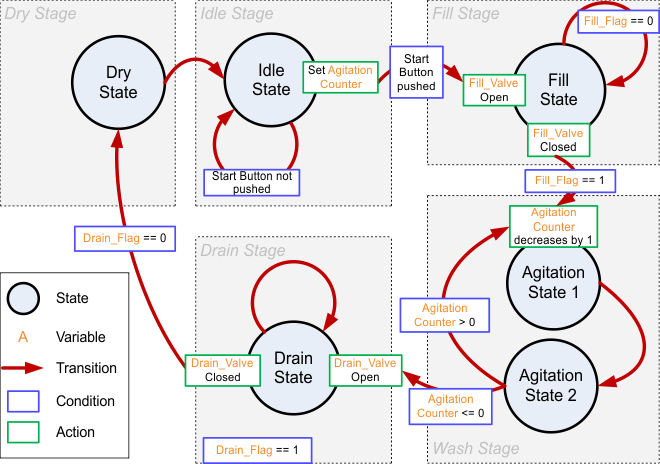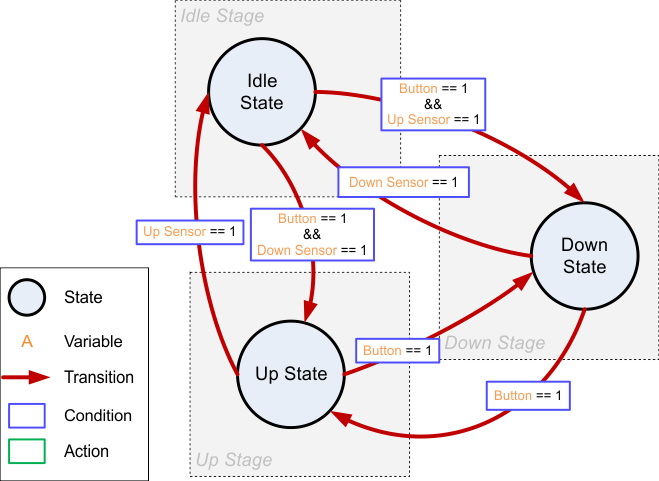SPRUHJ0C April 2013 – October 2021 TMS320F28068M , TMS320F28069-Q1 , TMS320F28069M , TMS320F28069M-Q1
PLAN
SpinTAC Plan provides easy design and execution of complex motion sequences. The trajectory planning feature allows users to quickly build various states of motion (speed or position A to speed or position B) and tie them together with state-based logic. SpinTAC Plan can be used to implement a motion sequence for nearly any application. Figure 3-4 displays the motion sequence for a washing machine and Figure 3-5 displays the motion sequence for a garage door. Both of these were easily designed using SpinTAC Plan. Once designed, the trajectories are directly embedded into the C code on the microcontroller.
 Figure 2-4 State
Transition Map for a Washing Machine
Figure 2-4 State
Transition Map for a Washing Machine Figure 2-5 State
Transition Map for a Garage Door System
Figure 2-5 State
Transition Map for a Garage Door System